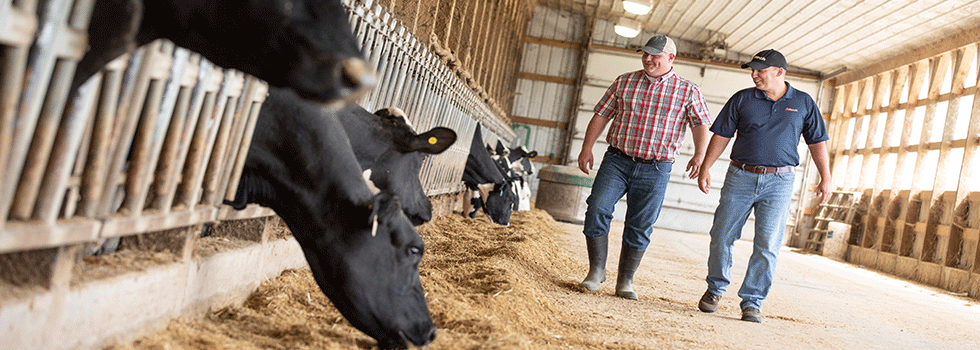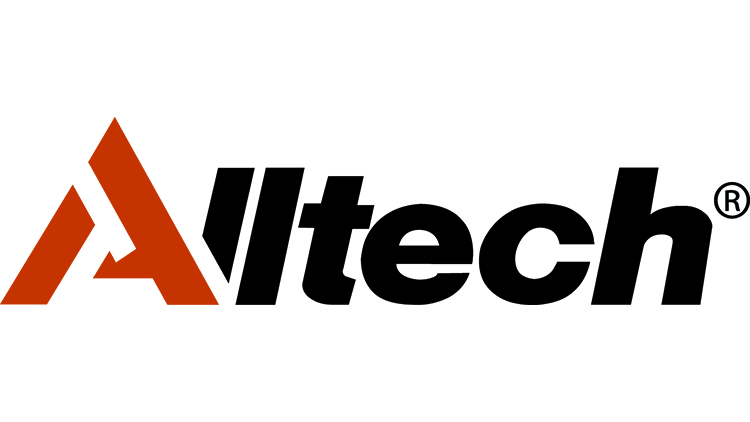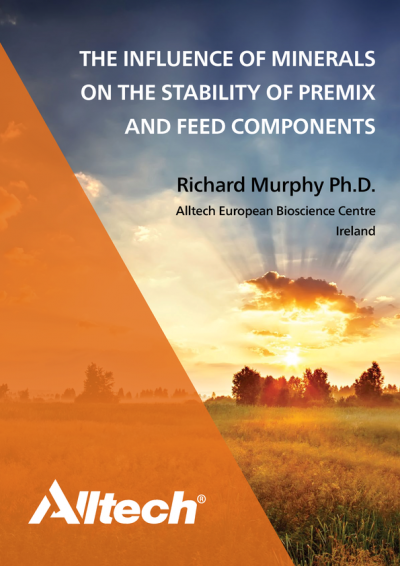Promotional Features
Measuring how yeast can improve feed efficiency in dairy cows
Yeast supplementation is a common practice to improve the efficiency of feed utilization and performance in dairy cows. It is well known that supplements containing live yeast can improve rumen fermentation and the digestive process by stabilizing rumen pH and stimulating the growth of beneficial microbial populations.
These positive changes can be attributed to growth factors, including peptides, and the effect on the rumen anaerobiosis to create optimal conditions for the rumen microflora.
Good rumen function will ensure optimal feed intake and digestive efficiency in dairy cows, while poor rumen function can negatively impact feed intake, health and overall cow performance. Formulating the ration correctly and understanding how the individual ingredients in the ration work together can help keep the dairy cow’s rumen and digestive system functioning properly.
Ensuring good formulations will produce desired results
Published research and decades of use in the field suggest that most dairy diets respond positively to Yea-Sacc®, a yeast culture based on Saccharomyces cerevisiae that stimulates the growth of fiber-digesting and lactic acid-utilizing bacteria in the rumen. These microbial changes directly result in:
- A stable rumen pH, which is conducive to better fiber digestion and a reduced risk of rumen acidosis
- Improved feed intake
- Enhanced milk yield and components
However, not all formulation strategies react the same way. As a result, there may be instances in which supplementation with Yea-Sacc does not yield the expected results.
To quantify the efficacy of Yea-Sacc for improving rumen fermentation and nutrient utilization for specific dairy TMRs, allowing for greater precision when feeding Yea-Sacc, Alltech created the Yea-Sacc® Value Test (YSVT®). This is a valuable tool to improve the precision of yeast supplementation.
The response of dairy TMRs to Yea-Sacc supplementation may vary depending on the feedstuffs. Formulation models cannot always be relied on to accurately predict the effects of non-nutritive feed additives on rumen fermentation, which limits the precision of ration formulation and the prediction of the efficacy of a given additive. A quick lab-based test that evaluates the potential of Yea-Sacc in a particular situation can help improve the nutritive value of a given TMR.
Building on Alltech IFM®, an in vitro rumen fermentation model used to characterize feed digestion kinetics, YSVT is a unique approach to rumen fermentation analysis. Standard in vitro rumen simulation techniques are usually conducted over a shorter period spanning 48 to 72 hours of fermentation. As a result, these techniques do not allow for an accurate evaluation of the efficacy of yeast supplements, as the effects of yeast on rumen populations are not readily evident until supplements like Yea-Sacc have been included in the diet for at least 4 to 7 days.
As the animal adapts to the presence of Yea-Sacc in its diet, the rumen microbial population changes to comprise higher concentrations of fiber-digesting and lactate-utilizing bacteria. YSVT utilizes rumen fluid both from animals that have adapted to Yea-Sacc and their counterparts that are fed the same basal ration without Yea-Sacc. This allows for the adequate adaptation of the rumen microbial populations to Yea-Sacc without the need for long-term incubation in the lab.
The YSVT test measures key fermentation indicators, including:
- Digestibility
- Lactic acid concentration
- Available energy (i.e., energy produced from the fermentation of carbohydrates in the form of volatile fatty acids)
- Rumen energy efficiency (i.e., useful energy per pound of feed digested)
To date, more than 250 dairy TMRs have been analyzed using YSVT. More than 95% of the samples showed a positive response to Yea-Sacc supplementation in terms of available energy and rumen energy efficiency, with an average response of +12.5%.
In around 50% of all samples, the increase in the useful energy released was not associated with improvements in digestibility. This indicates that Yea-Sacc increases the efficiency by which feed nutrients are converted into available energy for the animal, most likely through a more efficient and healthier microbiome. The lactic acid response was more variable, with more than 60% of the samples showing a decreased concentration, indicating a reduced risk for a lower rumen pH and acidosis.
Results indicate a distinct difference between the rumen microbiome in Yea-Sacc supplemented cows versus ‘naïve’ cows, with supplemented cows appearing to have a superior rumen ecosystem to drive feed efficiency, whilst that of the latter feature harmful species coming to the fore.
Yea-Sacc conditioning enhances rumen microflora diversity*
*Simpson and Shannon are quantitative measures that reflect how many different types (such as species species) are present in a microbial community. The bigger the number is, the more diverse the community is.Microbiome changes in Yea-Sacc conditioned cows
Naïve Cows were shown to have higher counts of:
- Sarcina – Bloat
- Methanobrevibacter - Methanogen
- Methanosphaera – Methanogen
- Anaerovibrio - Lipolysis
Yea-Sacc fed cows were shown to have higher counts of:
- Bifidobacteria - Amylolytic
- Ruminococcus - Cellulolytic
- Prevotella – Saccharolytic/Xylanlolytic
- Pseudobutyrivibrio – Starch fermenting/Butyrate
- Pediococcus – Lactate utilisation
- Selenomonas – Lactate utilisation
- T. saccharophilum - Pectinolytic
In conclusion, the YSVT helps nutritionists and producers understand the value of yeast fermentation. As a result, feed additive supplementation strategies can be tailored to maximize the energy produced from rumen fermentation and improve digestive efficiency in dairy cows. The future development of this tool will focus on better understanding how various ingredients and the nutrient composition of the TMR affect the magnitude of the response to Yea-Sacc. This will allow us to develop better predictive models to quantify the expected animal performance based on the outcome of a given fermentation profile.
Article written by Kamal Mjoun, Ruminant Scientist, Alltech








